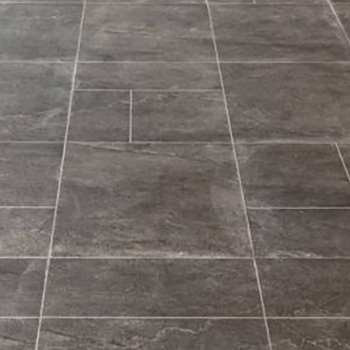There’s nothing quite like the satisfaction of stepping back from a hard day’s tiling and admiring your work. It’s certainly a proud moment, but one that can quickly be marred by that thin white film now coating your tiles.
Known as grout haze, this smeared white coat is a common aftermath for many tiling jobs, and when left untreated, it can be a tricky and persistent stain to get rid of. Fortunately, it’s not a permanent smudge, and can be readily removed with the right know-how and knowledge.
So, if your tiles have been impacted by this annoying problem, here’s exactly what you need to know about removing grout haze.
What does grout haze look like?
A combination of minerals, cement, and water, grout haze can be quickly identified by the white streaks it leaves behind on your tiles and is an unfortunate side effect of the grouting process - though, one that might not be immediately obvious.
grouting process - though, one that might not be immediately obvious.
During tile installation, your tiles are coated in a thick layer of grout in order to fully cover and seal the gaps between them. And while most of it will be cleared off your tiles as you go, any missed spots will eventually dry as white spots or streaks alongside the grout. Hence the term grout haze!
Which tiles are the most susceptible to grout haze?
While all tiles can experience some form of grout hazing, some tile materials are more susceptible to it than others. Porous stone types, such as limestone tiling, are particularly vulnerable to grout hazing, though grouting hazing can be experienced on all forms of natural stone tiling.
What to consider before removing grout haze
When it comes to getting rid of grout haze, your best bet is to tackle it immediately before it has the chance to properly set into your tiles - ideally within 24 hours of applying the mix. If cleaning is not possible after 24 hours, then you should not leave your grout haze uncleaned for more than 10 days, otherwise, it will be even harder to remove.
Finally, you need to be sure you have the right cleaner for your tile material. Acidic cleaners, for example, should not be used on stone. On top of this, if your grout contains epoxy, then you will need to purchase the relevant professional cleaner to remove it.
If you’re unsure about anything, don’t hesitate to get in touch with our team of tiling experts, who are on hand to offer guidance and advice.
How to remove grout haze
When tackling grout haze, you have a number of cleaning options available to you in order to get the job done. So, what are some simple techniques you can adopt when wondering how to remove dried grout from stone tile and porcelain?
- Warm water: you can simply try using a gentle scourer and lukewarm water to clear the haze off, though this should be done gently to avoid damaging your tiles and will likely only have an effect on sporadic and light hazing.
- White wine vinegar: if warm water isn’t enough, then the addition of white vinegar to your solution could prove the deciding factor in getting your porcelain tiles clean (because it’s acidic, avoid using on natural stone). Mixing one part vinegar with four parts water, use the same wiping motions as before to try and clean your tiles. However, if this does not work, then you’ll likely need to turn to a specific cleaning product.
- Sugar solution: while white wine vinegar is suitable for use on porcelain tiles, when it comes to knowing how to remove grout haze from natural stone tile, you can instead mix one part sugar with four parts warm water. You should soak a cloth in the solution and lay it over the tiled area for an hour, before removing and wiping down with fresh water.
- Dedicated cleaning solution: there are plenty of grout haze removers out there - you just need to pick the right one for your tile material. Here at Stone Superstore, we recommend using LTP’s Grout Stain Remover on porcelain and ceramic tiles, though for stone tiles, we’d opt for LTP Grimex instead. Before using a cleaning solution, we’d always suggest applying an amount to a small area, to get the strength right.
With enough effort, a professional cleaning solution should deal with your grout haze issues, so long as you follow the instructions given on the product. Just remember to.jpg) wear gloves and goggles to protect yourself while using it.
wear gloves and goggles to protect yourself while using it.
How to clean grout haze off porcelain tile
Like stone tiles, there are also a few rules to follow if you want to clean grout haze off porcelain tiles, specifically what sort of brush you should use when cleaning to get the best results.
For this, most experts recommend using a stiff brush to avoid transferring any colour from your chosen cleaning sponge onto your tiles, keeping them shiny, fresh, and free of any blemishes.
Hopefully, with this information in hand, you’ll have little trouble dealing with any grout haze in your home. Of course, if you are dealing with persistent grout haze and want to change your tile setup entirely, then get in touch with the Stone Superstore team today, or explore our selection of tile advice guides.

